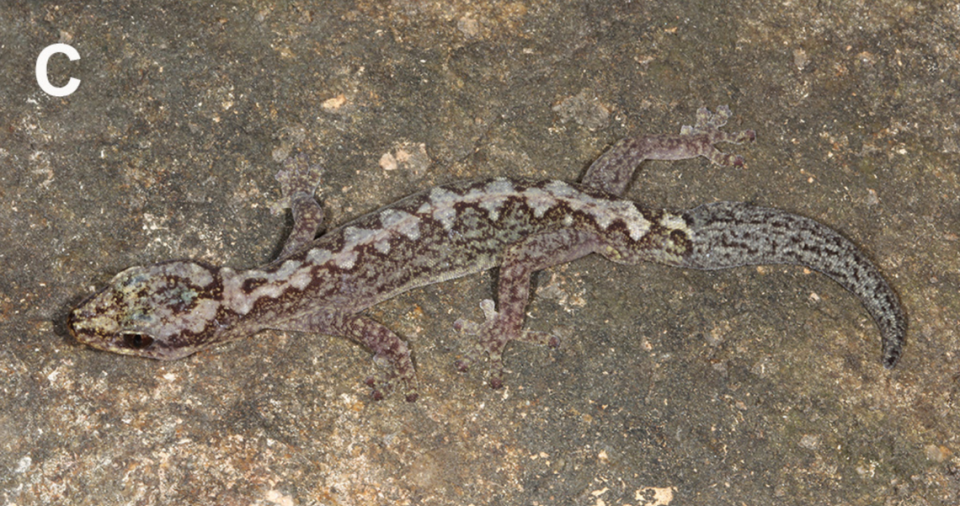Copper-eyed mountain creature — with pointed ‘spurs’ — discovered as new species
Lurking amid some rocks on a mountain in Australia, a copper-eyed creature waited for night to fall. The animal with its patterned scales finally emerged, but neither its camouflage nor the surrounding darkness could keep it hidden.
Scientists hiked up several mountains in Queensland to survey wildlife, according to a study published Sept. 11 in the journal Zootaxa.
During the expeditions, co-author Conrad Hoskin began noticing a “different”-looking lizard, he told McClatchy News.
Intrigued, researchers captured 17 of these lizards, the study said. Taking a closer look, they realized they’d discovered a new species: Amalosia nebula, or the upland zigzag gecko.
The upland zigzag gecko is considered “moderate” in size, reaching about 4.4 inches, researchers said. It has a “narrow” head, “slender” body and copper eyes. Near the base of its tail are several “spurs,” or “large, pointed” spikes.
Photos show the upland zigzag gecko. It blends into the rock face with its brownish-maroon sides and lighter gray back. A spiky line runs down each side, forming a partially-aligned zigzag pattern, photos show.

Researchers found the upland zigzag gecko in rocky “outcrops on ridges and mountaintops” between about 2,460 feet and about 3,900 feet in elevation. During the day, the geckos hid among the rocks. At night, they moved to the “rock surfaces and tree trunks” to hunt, the study said.
The new species was found in six mountainous areas of northeastern Queensland, researchers said. This area, known as the Wet Tropics, is near Cairns, a city about 1,440 miles northwest of Sydney.
Researchers named the new species “nebula,” after the Latin word for “cloud,” due to its “elevated, cloudy habitat.” The animal’s common name, “upland,” also refers to its natural habitat.

The new species was identified based on its scale pattern, body shape, coloring, spurs and elevated habitat, the study said. DNA analysis found the new species had a “high genetic divergence” from other zigzag geckos. Hoskin said the species had “at least 25%” genetic divergence.
The research team included Conrad Hoskin and Patrick Couper. Researchers also discovered four more new species of zigzag gecko: a “large” rock-dwelling gecko, a “large” woodland gecko, a sap-licking gecko and a small “pale” gecko.
Zigzag geckos are an understudied group of lizards found “across eastern and northern Australia,” researchers said. The geckos are named after the distinctive zigzag pattern that runs down their backs.
Shed skin hanging on vines was left by new species of ‘large’ rock-dwelling creature
‘Large’ woodland creature — with ‘ladder-like’ pattern — discovered as new species
‘Shy’ eight-eyed creature found hiding under cow poop. It’s a hairy new species

